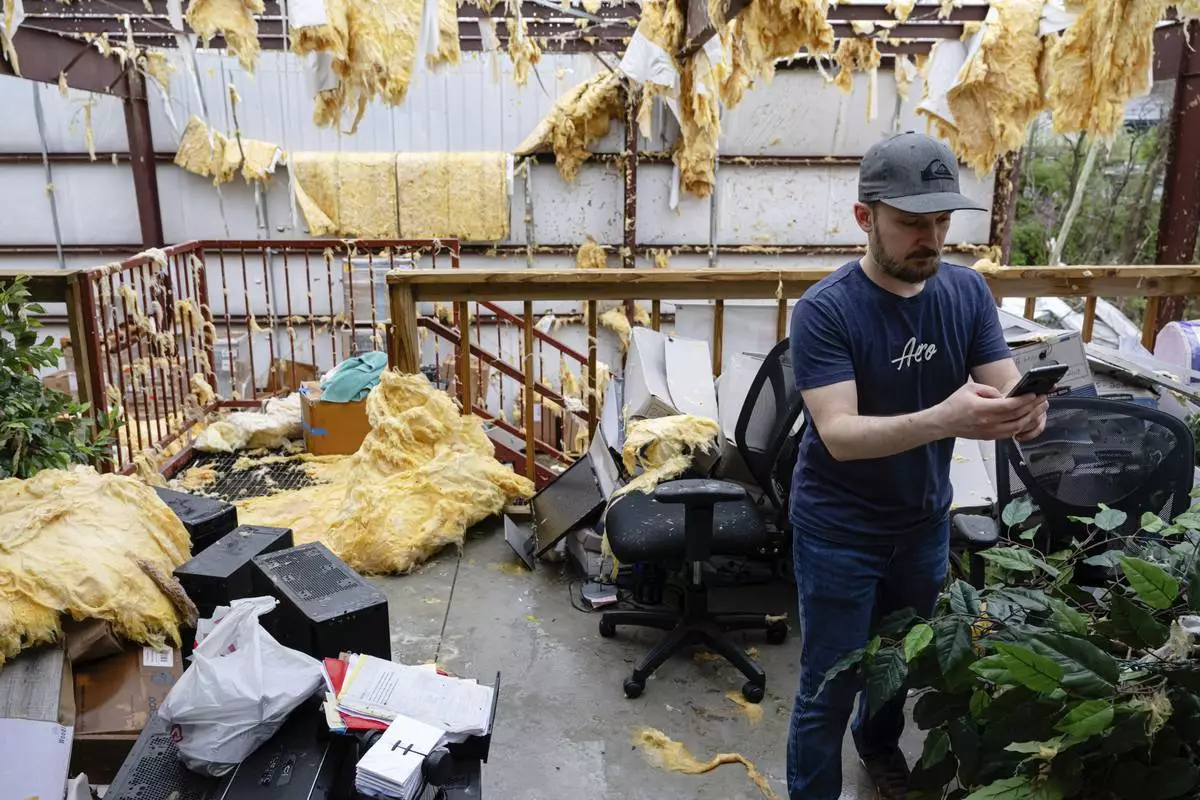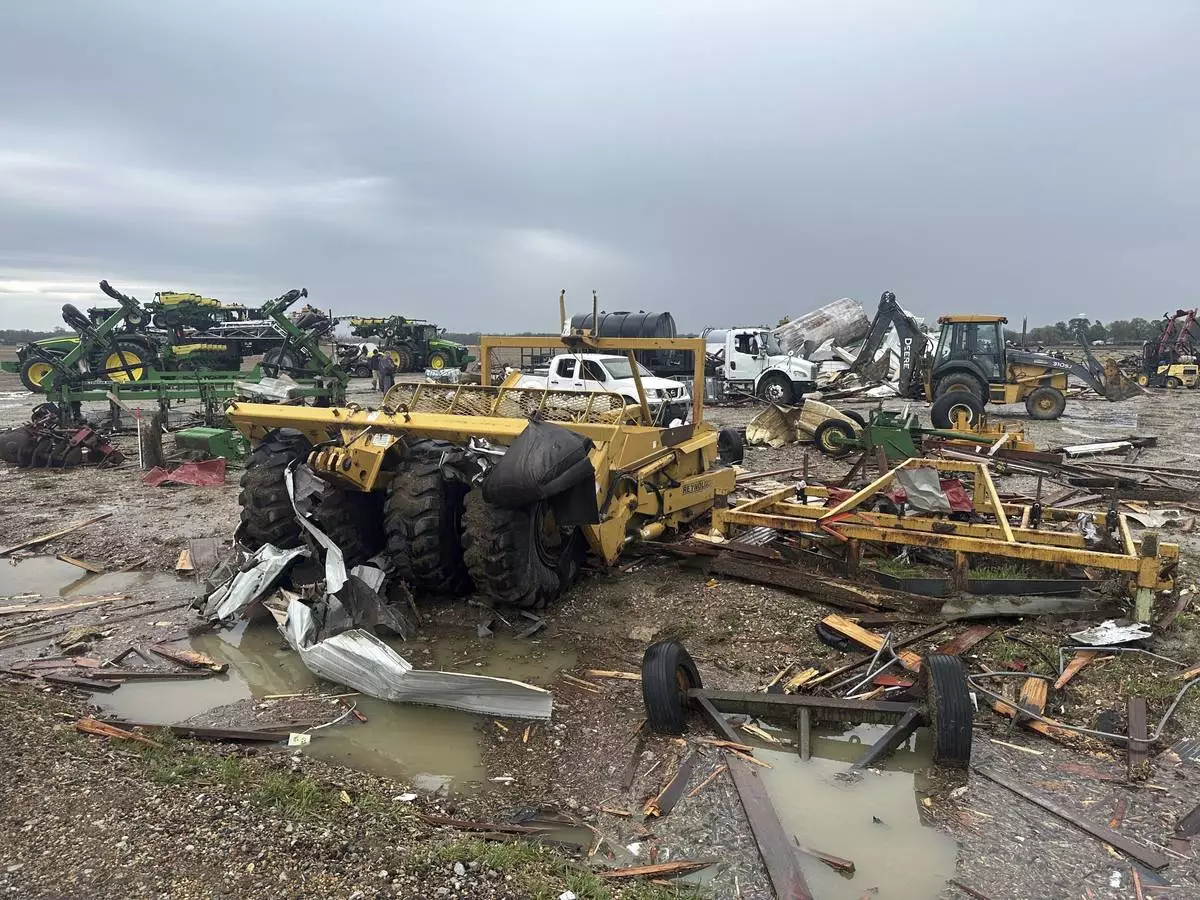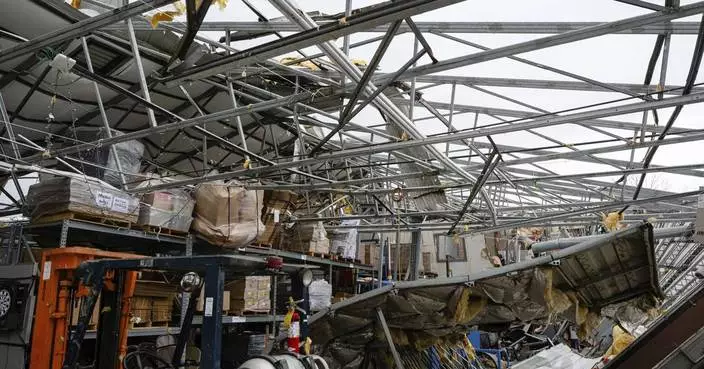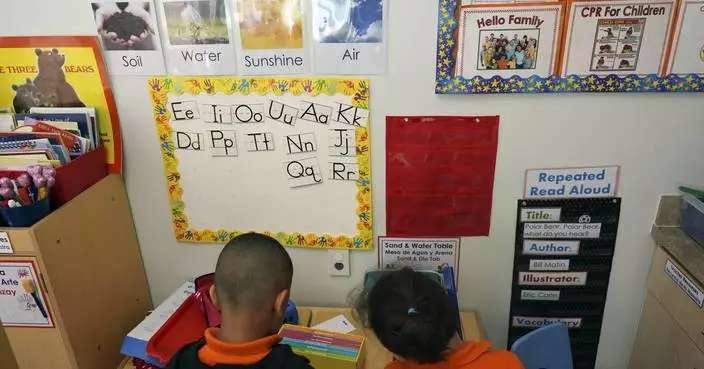Hooters is going bust.
The U.S. restaurant chain, known for chicken wings and its skimpy “Hooters Girls” wait-staff outfits, has filed for bankruptcy protection. HOA Restaurant Group filed the motion for Chapter 11 protection Monday in the North Texas Bankruptcy Court in Dallas.
It's the latest legacy restaurant chain to run into financial trouble amid high food and labor prices, changing customer tastes and growing competition from newer casual chains like Shake Shack.
Red Lobster, TGI Fridays and Buca di Beppo all filed for bankruptcy protection last year, while the Tex-Mex chain On the Border filed for bankruptcy protection last month.
Under the Hooters bankruptcy plan, 100 company-owned U.S. restaurants would be sold to a group of Hooters franchisees. The franchisees, who include Hooters' founders, currently operate 14 of the 30 highest-volume Hooters restaurants in the U.S., the company said.
“For many years now, the Hooters brand has been owned by private equity firms and other groups with no history or experience with the Hooters brand,” Neil Kiefer, CEO of the franchise group Hooters Inc., said in a statement. “As a result of these transactions, the Hooters brand will once again be in the hands of highly experienced Hooters franchisees and we will be well-positioned to return this iconic brand to its historic success."
The group of buyers said Tuesday it wouldn't comment on the deal's financial terms.
Hooters said franchisees or licensing partners would continue to operate all existing locations, including those outside the U.S. There are approximately 305 Hooters restaurants in 29 states and 17 countries, according to court filings.
Hooters, based in Atlanta, Georgia, was founded in Clearwater, Florida, in 1983 by six businessmen with no food service experience who claimed they wanted to run a restaurant they couldn't get kicked out of.
But its business strategy has faced challenges over the years, including lawsuits over hiring only “Hooters Girls” to serve customers. In 2017, the company tried opening a restaurant that didn’t feature servers in tight tops as a test of a different approach to its original concept.
Last year, Hooters agreed to pay $250,000 to settle a race and color discrimination lawsuit brought by the U.S. Equal Employment Opportunity Commission. According to the lawsuit, a Hooters in North Carolina laid off 43 employees during the COVID pandemic, but recalled primarily white employees and Black employees with lighter skin tones once it began rehiring workers.
The company has also been forced to scale back as its financial woes mounted. In 2019, the Hooters hotel-casino off the Las Vegas Strip was sold to an Indian hotel company and rebranded as the OYO Hotel and Casino. Last year, the company closed around 40 underperforming U.S. locations.
Hooters had sponsored the No. 9 NASCAR car driven by Chase Elliott since 2017, but last year, Hendrick Motorsports ended its ties to the longtime sponsor because it was not meeting its financial commitments.
Kurtenbach reported from Bangkok. Durbin reported from Detroit.

FILE -Chinese waitresses dressed in orange shorts and t-shirts cheers while welcoming the arriving guests at the Hooters restaurant in Beijing, China, Sept. 10, 2007. (AP Photo/Andy Wong, File)

FILE- July 27, 2017, shows a Hooters sign at a restaurant in Hialeah, Fla. (AP Photo/Alan Diaz, File)
WASHINGTON (AP) — After Trump administration job cuts, nearly half of National Weather Service forecast offices have 20% vacancy rates — twice that of just a decade ago — as severe weather chugs across the nation's heartland, according to data obtained by The Associated Press.
Detailed vacancy data for all 122 weather field offices show eight offices are missing more than 35% of their staff — including those in Arkansas where tornadoes and torrential rain hit this week — according to statistics crowd-sourced by more than a dozen National Weather Service employees. Experts said vacancy rates of 20% or higher amount to critical understaffing, and 55 of the 122 sites reach that level.
The weather offices issue routine daily forecasts, but also urgent up-to-the-minute warnings during dangerous storm outbreaks such as the tornadoes that killed seven people this week and “catastrophic” flooding that's continuing through the weekend. The weather service this week has logged at least 75 tornado and 1,277 severe weather preliminary reports.
Because of staffing shortages and continued severe weather, meteorologists at the Louisville office were unable to survey tornado damage Thursday, which is traditionally done immediately to help improve future forecasts and warnings, the local weather office told local media in Kentucky. Meteorologists there had to chose between gathering information that will help in the future and warning about immediate danger.
“It's a crisis situation,” said Brad Coleman, a past president of the American Meteorological Society who used to be the meteorologist in charge of the weather service's Seattle office and is now a private meteorologist. “I am deeply concerned that we will inevitably lose lives as a result of the added risk due to this short-staffing.”
Former National Weather Service chief Louis Uccellini said if the numbers are right, it's trouble.
“No one can predict when any office gets stretched so thin that it will break, but these numbers would indicate that several of them are there or getting close, especially when you factor that large segments of the country are facing oncoming threats of severe weather, flooding rains while others are facing ominous significant fire risks,” Uccellini said in an email.
The vacancy numbers were compiled in an informal but comprehensive effort by weather service workers after the cuts spearheaded by Elon Musk's Department of Government Efficiency. They checked on individual office staffing levels and looked at how they compared to the past. Staffing levels, including vacancies, are detailed and cross-referenced by offices, regions, positions and past trends, with special notes on whether efforts are being made to fill them.
The AP, after obtaining the list from a source outside the weather service, sought to verify the numbers by calling individual weather offices, checking online staff lists and interviewing other employees not involved in the data-gathering effort. The workers' data sometimes varied slightly from data shown on weather service websites, though employees said those could be out of date.
Rep. Eric Sorensen, an Illinois Democrat and the only meteorologist in Congress, said his office independently obtained the data and he verified parts of it with weather professionals he knows in Midwestern weather service offices, which are called WFOs. The Davenport-Quad Cities office near his home has a 37.5% vacancy rate.
“They’re doing heroic effort. Just with what happened the other day with the tornado outbreak, the killer tornado outbreak, I saw incredible work being done by the WFOs down around Memphis and up to Louisville. Incredible work that saved people’s lives,” Sorensen told the AP on Friday. “Going forward with these types of cuts, we can’t guarantee that people are going to be as safe as they were.”
“I'm incredibly concerned because this affects everyone in every part of the country,” Sorensen said, noting the potential for severe storms Friday in House Speaker Mike Johnson's home district near Shreveport, Louisiana, where the data shows a 13% vacancy rate, well below the average for the south and the rest of the country.
The employees' data, which goes back to 2015, showed that in March 2015 the overall vacancy rate was 9.3%. Ten years later, as of March 21, it was 19%.
The weather service did not immediately respond to a request for comment.
Some northern and central stations — such as Rapid City, South Dakota, with a 41.7% vacancy rate, Albany, New York, at 25%, Portland, Maine, at 26.1% and Omaha, Nebraska at 34.8% — have been so short-staffed that they've curtailed weather balloon launches that said provide vital observations for accurate forecasts.
The vacancies go beyond meteorologists who do forecasts. Twenty-three offices are without the meteorologist-in-charge who oversees the office. Sixteen have vacancies in the crucial warning coordination meteorologist job which makes sure emergency officials and the public prepare for oncoming weather disasters. The Houston office, with a 30% vacancy rate, is missing both those top positions, according to the data and the office's own website.
Houston has so much damage from flooding, hurricanes and even a derecho that “their (damage) numbers are through the roof,” said Bernadette Woods Placky, chief meteorologist for Climate Central and a former television meteorologist.
“The National Weather Service employees are still going to do everything they can to keep people safe and prepared. It’s just that much harder and it puts lives at risk,” Placky said. “This time of the year and in this situation, this is when severe weather season peaks and we’re heading into the season of the biggest extremes with wildfires, with hurricanes, with extreme heat, which is our deadliest of all of extreme weathers.”
One weather service field office chief, who asked not to be identified because of fears of job loss, said the lack of technicians to fix radar and other needed equipment could be critically dangerous.
“People are bending over backwards” to cope with the lack of staffing, the chief meteorologist said. “The burden is going to kill us."
Northern Illinois atmospheric sciences professor Victor Gensini and others compared being stretched thin to cracks in aviation safety.
"The question becomes, what falls through the cracks because they’re busy doing other things or they’re short-staffed," Gensini said. “Maybe they can’t answer the phone to take a critical weather report that’s coming in. Maybe there’s so many storms in the counties that they’re responsible for that they can’t physically issue warnings for every single storm because they don’t have enough people working on the radar.”
“These are all theoretical concerns, but it’s sort of like when you read about aircraft disasters and how they occur,” Gensini said. “It’s the cascading of risk, right? It’s the compounding, like the pilot was tired. The pilot missed the cue.”
This story has been corrected to delete a mention of Kentucky as among states with an office at more than 35% vacancy rate; its Louisville office vacancy rate is 29.2%.
The Associated Press’ climate and environmental coverage receives financial support from multiple private foundations. AP is solely responsible for all content. Find AP’s standards for working with philanthropies, a list of supporters and funded coverage areas at AP.org.

Daniel Fraser takes a photograph in the warehouse of the damaged building of Specialty Distributors after a tornado passed through an industrial industrial park on Thursday, April 3, 2025, in Jeffersontown, Ky. (AP Photo/Jon Cherry)

Damaged equipment sits on a farm struck by Wednesday night's tornado on Thursday, April 3, 2025, in Lake City, Ark. (AP Photo/Adrian Sainz)





















































